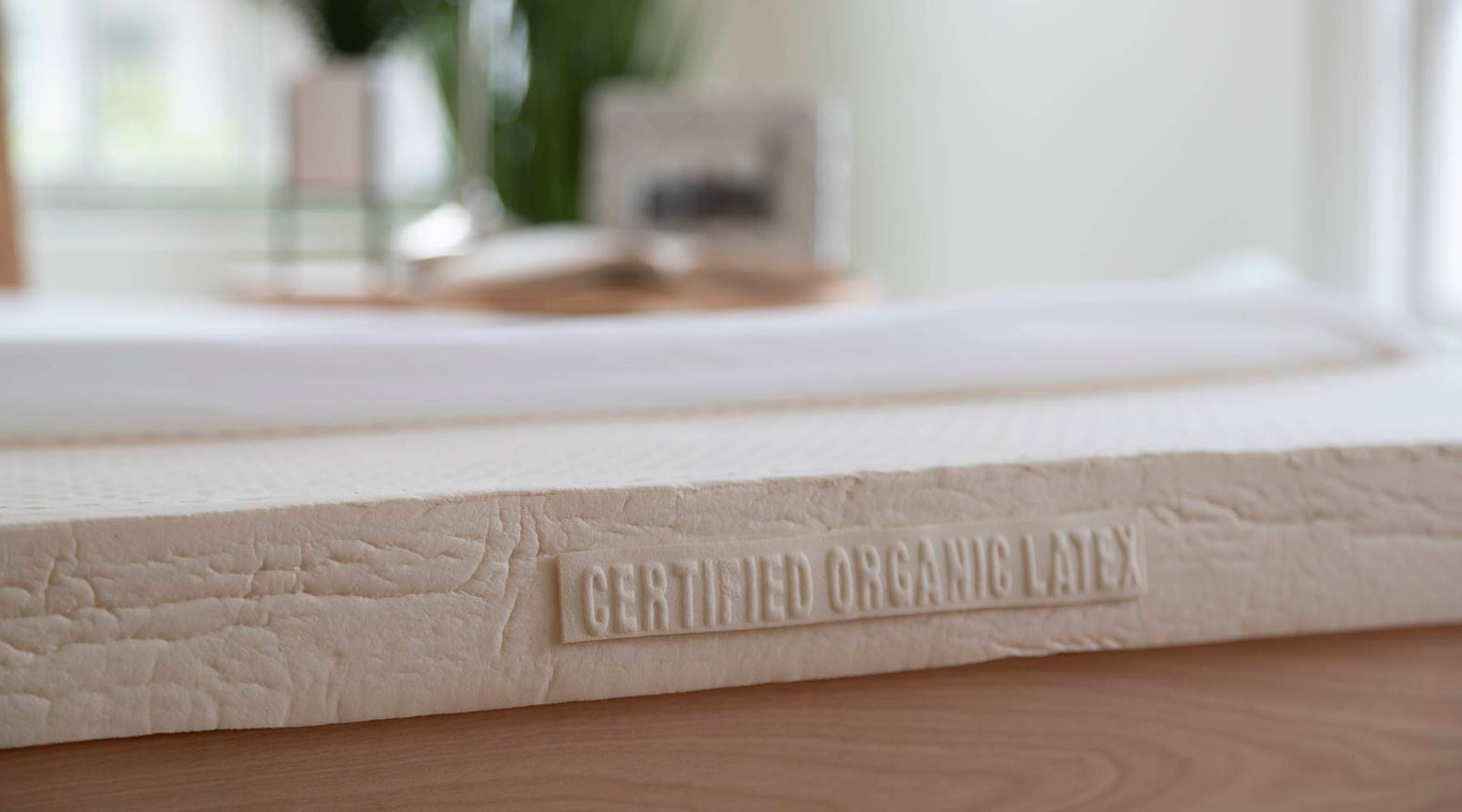
The Difference Between Organic Latex and Natural Latex
May 23, 2022 4 min read
If you are like most people, you probably think that organic latex and 100% natural latex are the same thing. After all, they’re both made from latex, right?
There is actually a difference between organic latex and natural latex, and it’s not just a matter of semantics. Here is a quick rundown of the differences between these two types of latex:
Natural Latex
Natural Latex is often thought of as being a healthier and more eco-friendly option than synthetic latex, but what is it exactly? Natural latex is produced from raw latex harvested from rubber trees, not synthetic latex which is manufactured from petroleum and other materials. When latex foam is made using only natural latex with zero synthetic latex added, it is referred to as 100% natural latex. To be completely transparent, even though 100% natural latex is used there are other ingredients such as soaps and curing agents necessary to turn the raw natural latex into supple foam. These ingredients are not potentially harmful and are different from “fillers” like clay which are used to dilute and extend the volume of latex. There are many benefits to using natural latex over synthetic latex. One of the biggest benefits is that it is a renewable resource. Rubber trees can be harvested again and again, unlike petroleum which is a finite resource.
If you are looking for a mattress that uses 100% natural latex, be sure to check the labels carefully. Some companies will claim their product uses natural latex, but only a portion of it is actually natural latex. The rest is usually synthetic latex or other materials like filler or polyurethane foam. So, it is important to be vigilant when reading labels.
Organic Latex
Organic latex is produced without the use of pesticides and under the supervision of a monitoring body like the Global Organic Latex Standard (GOLS). Non-organic 100% natural latex is produced from raw latex using standard farming practices. GOLS monitors farming practices, materials sourcing, fair trade practices, and wastewater treatment, as well as the social and environmental impact of the product.
Reputable sellers of latex mattresses will provide actual and current organic certifications, not just logos or claims. If you do not see them, ask. If they cannot provide them, move along.
So, what does this all mean for you?
If you are looking for latex that is truly organic, then you will want to make sure that it is certified organic. This way, you can be sure that the latex has not been exposed to any synthetic chemicals or contain any fillers.
If you are looking for latex that is simply natural, then you can choose either certified organic latex or 100% natural latex.
Read the labels.
We have all been there, scrolling through our feed and seeing an ad for a "one hundred percent natural" product and thinking to ourselves, "That's exactly what I need!" But what we do not realize is that sometimes, companies can be a little misleading with their labels. Just because a product claims to be natural, does not necessarily mean that it is. In fact, some companies will add fillers to their products in order to extend the amount of natural or organic latex and lower the cost. This might not seem important, but it actually dramatically lowers the quality and durability of the product. It is like watering down juice to get more servings. Most companies will not tell you that their product contains fillers, but it is important to be aware of this when shopping for a latex mattress.
Be sure to look for certifications from recognized organizations such as GOLS, Oeko-Tex, LGA and Control Union to ensure that the 100% natural latex offered is of the highest quality. Otherwise, you might be buying a product that contains fillers without even knowing it.
Pay attention.
When it comes to mattresses, do not be fooled by those that market themselves as "organic." While certified organic latex is less common, certified organic fabrics are not. Some mattress companies use or offer organic fabrics to cover their non-organic latex, and then place the word "organic" front and center in their branding and marketing materials. Always peek under the covers before you buy to make sure you are getting what you are paying for.
What is the best?
When it comes to choosing between true 100% natural latex and organic latex mattress, there is no right answer – it all depends on your priorities. Both can be great options, but it is important to know what you are getting. Do your homework and make sure you know what you are getting before you make a purchase. There are some companies out there that will try to fool you, so do not let them. Natural latex without fillers can be a great option, but so can 100% organic latex. Just be aware of what you are buying and make sure you know what you are paying for.
Subscribe
Sign up to get the latest on sales, new releases and more …
